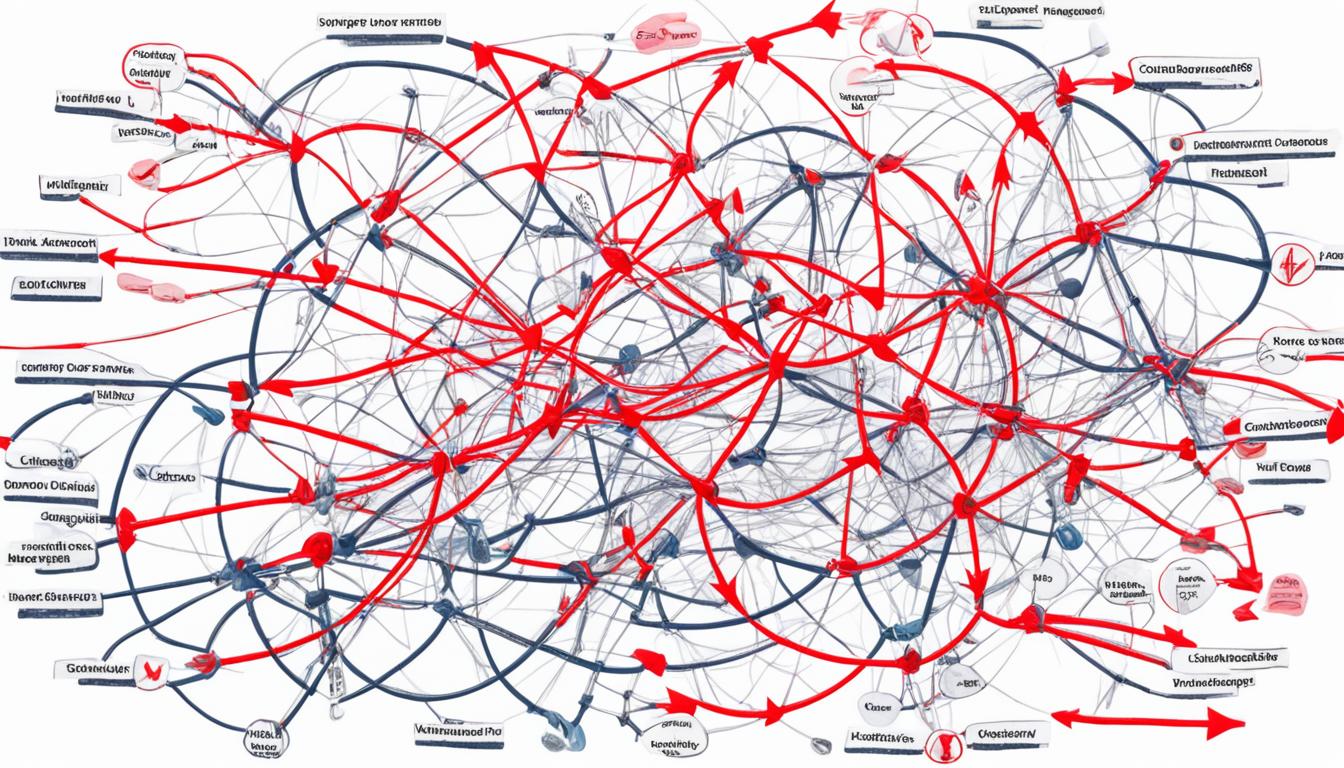Inborn errors of metabolism (IEMs) are rare genetic disorders. They happen when there’s a problem with specific enzymes. This can lead to many health problems. These issues mostly affect the nervous system.
If you have an IEM, you might face challenges like learning problems or autism. The impact depends on which IEM you have and when it starts affecting your brain. It’s really important to spot these issues early and act fast. This can make a big difference in how well you cope with the disease.
Stem cell therapy is offering new hope for people with IEMs. This method tries to fix the enzymes’ problem or change bad cells with good ones. These new cells should work better. Stem cell treatments are special because they work based on your own genetic needs. So, they’re like a custom-made solution for each person.
Key Takeaways:
- Inborn errors of metabolism are genetic disorders caused by the loss of function of specific enzymes.
- These disorders primarily affect the nervous system and can manifest as neurodevelopmental disorders.
- Symptoms of inborn errors of metabolism vary depending on the specific disorder and the stage of neurodevelopment affected.
- Early diagnosis and intervention are crucial for managing inborn errors of metabolism.
- Stem cell therapy shows promise as a potential treatment option for certain inborn errors of metabolism.
Causes and Symptoms of Inborn Errors of Metabolism
Inborn errors of metabolism (IEM) are complex genetic conditions. They happen because of mutations in certain enzymes. These enzymes are key for our bodies to process substances. Genetic mutations can be inherited or happen randomly.
The symptoms of IEMs show up differently depending on which metabolism pathway is affected. They mainly affect the brain and the way it works. Some signs include:
- Intellectual disability
- Learning difficulties
- Motor coordination problems
- Seizures
- Developmental regression
People with IEMs can also have troubles in other parts of their bodies. This can include problems with their organs, the gut, and growth. The signs can be very different from one person to another, even if they have the same condition.
Mutations in genes that affect metabolism can lead to many problems. They cause an imbalance in the chemicals our bodies need. This can lead to the many symptoms of IEMs we see.
Here’s a table showing how IEMs can impact the body:
| Inborn Error of Metabolism | Neurological Manifestations | Non-Neurological Manifestations |
|---|---|---|
| Amino acid disorders | Developmental delay, intellectual disability, seizures | Failure to thrive, metabolic acidosis |
| Lysosomal storage disorders | Neurodegeneration, movement disorders | Hepatomegaly, splenomegaly |
| Glycogen storage disorders | Hypoglycemia, muscle weakness | Hepatomegaly, cardiomyopathy |
| Organic acidemias | Metabolic encephalopathy, seizures | Vomiting, metabolic acidosis |
Spotting and diagnosing IEMs needs a deep look at the symptoms and family history. Early diagnosis helps in starting the right treatments. This ensures people get the care they need. Next, we’ll look at how these conditions are screened and treated.
Diagnosis and Management of Inborn Errors of Metabolism
Diagnosing inborn errors of metabolism uses clinical evaluation and tests. This includes metabolic screenings and genetic tests. These tools help find the genetic changes and metabolic issues causing the disorders.
Metabolic Screening Tests
Blood and urine tests are key in finding these errors. They check metabolite levels and enzyme activity. This tells doctors what’s wrong with the metabolism.
Genetic Testing
Genetic testing finds specific mutations linked to these disorders. It reads an individual’s gene sequence to pinpoint issues. This helps doctors know the right treatment plan.
Biomarker Analysis
Analysing biomarkers shows metabolic issues. It info about what’s wrong with metabolism. Doctors use this to plan specific treatments.
Management Strategies
Managing these disorders is complex and needs a unique plan for each person. This might include special diets or therapies.
Specialized Diets: Many patients need special diets. These diets improve nutrition and avoid harmful substances. They are based on the disorder a person has.
Enzyme Replacement Therapy (ERT): ERT might be useful for certain disorders. It puts missing enzymes back into the body. This can lessen symptoms.
People with these disorders need regular check-ups and support. Early help and a good management plan make a big difference in their lives.
| Diagnosis and Management | Inborn Errors of Metabolism |
|---|---|
| Diagnostic Approaches |
|
| Management Strategies |
|
Stem Cell Therapy for Inborn Errors of Metabolism
Stem cell therapy is becoming a key treatment for those with inborn errors of metabolism. Its goal is to fix enzyme problems and heal damaged cells. This is done with the help of stem cells’ regenerative properties.
Researchers are looking into how stem cell therapy can help with various issues. These include lysosomal storage disorders, mitochondrial diseases, and other genetic metabolic troubles.
This treatment is good because it is tailored to each person’s problems. Such individual focus may greatly help in treating the root causes of metabolic errors.
Stem cell therapy is still being developed. More research and trials are needed to understand how well it works. But, if it proves effective, it could change how we treat metabolic errors and bring new hope to many.

